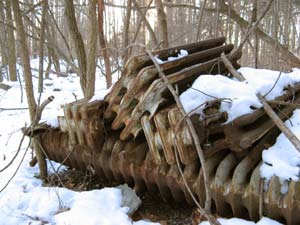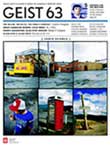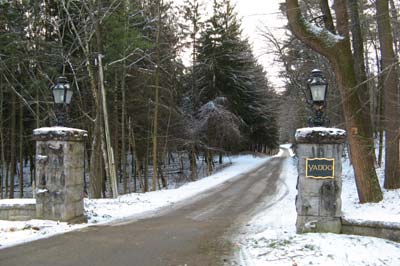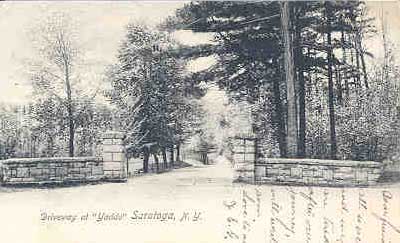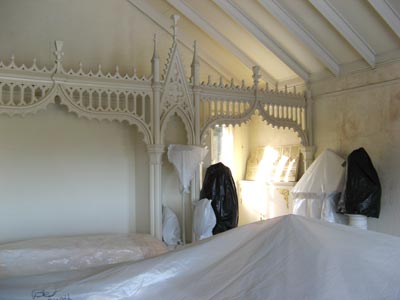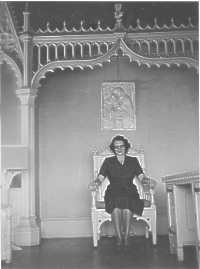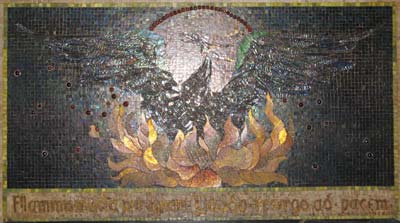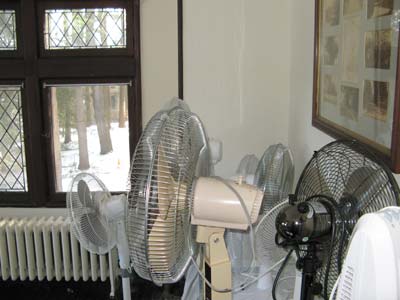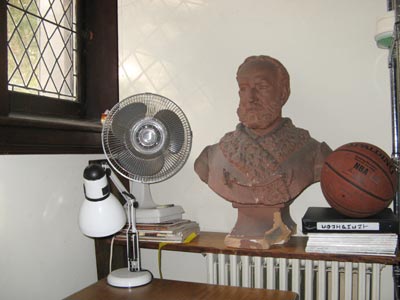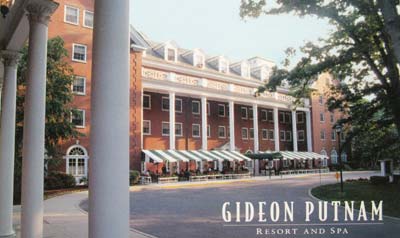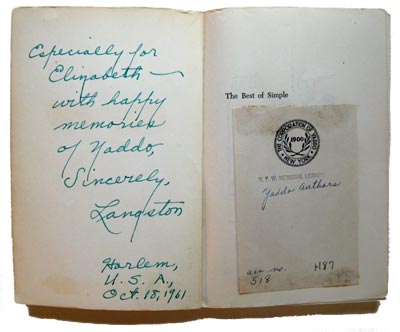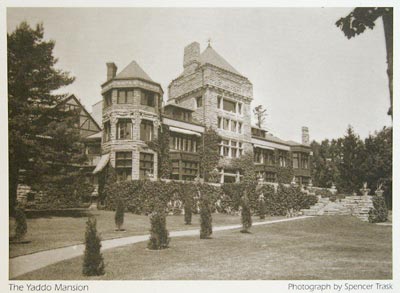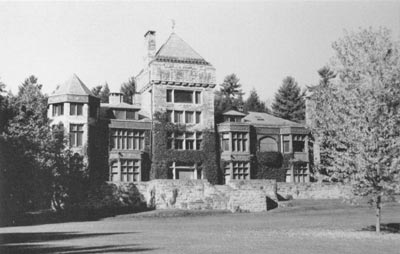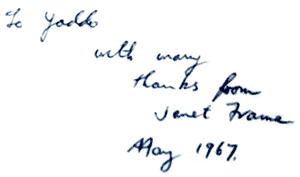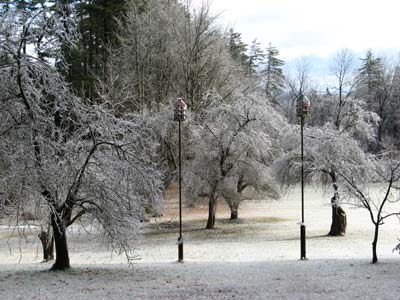No way Yaddo is as haunted as Wyoming, but still, some strange stuff has been going on around here. For one thing, none of us can sleep. That’s the good news. For the longest time I thought I was the only one showing up at the dinner table out of sorts. For a month now I’ve been stumbling through surreal somnolent conversations feeling like the odd-man-out but now I see that none of us are quite ourselves.
One guy here reminds me of a much calmer version of a friend in Montreal. He says, if he appears calm it’s only because he subdued from not having slept in five nights. I was envious of the composer for having the composer’s cabin all to himself, with no neighbours to walk on his ceiling, but then he gave quite a convincing impersonation of the heating system that wakes him up every two hours and I did my best rendition of the acetylene torch sound the pipes in the wall by my bed make every time the guy in the room above mine opens his faucet. Now the composer and I are pals. Until one of us gets some sleep anyway. The guy in the room above mine says he was out walking in the woods late one night last week and an animal bigger than a fox and smaller than a German Shepard ran across his path. Then the PA system the Saratoga Race Track come on and played some off-to-the-races type music. In summer Race Track fanfare comes though the Yaddo woods loud and clear, but the stands and stables are all empty in winter and no matter how fantastic a sentence one finishes, one never hears the roar of the crowds.
I have heard screams on three late night occasions, a woman screaming in the woods back behind Pine Garde. The screams do not sound like they’re from pleasure. One hears about all the illicit sex that goes on at artists’ colonies. I imagine that during the summer season the bat-infested mansion is a carnival fun house of screams and moans. In this small cold season of close quarters and hot dry rooms, whatever sexual indiscretions may or many not be transpiring, they are most discreet. Some guests live nearby enough to arrange for conjugal visits. Others drink. Ping-pong is fun for a few minutes. Generally, most are too insomnia-exhausted to think up more imaginative uses for excess night hours. That’s where the ghosts come in. They see their opening and they go for it. My friend Daniel C. wrote in an email yesterday:
“I have a theory about sleeplessness in castles: that is the way that the ghosts insure their reality – keeping us awake to wonder at their presence.”
All four Trask children died young, but none appear to haunt Yaddo. Their mother, Katrina, took to wearing shapeless white dresses after, attempting, perhaps, to get a head start on her haunting of the place while she was still alive. Many guests have claimed to hear other guests claim to see Katrina’s ghost. Mostly it’s past guests themselves who haunt Yaddo. When my friend Camilo was here he said:
“I believe that I got Sylvia Plath’s room, I kept on thinking about her cold dead body when lying in that cold, cozy bed and hoping to have an extraordinary encounter with her mythological phantasm.”
Just when I thought I’d tried everything to shake my insomnia, yesterday afternoon I hit upon my new favourite miracle-cure: really loud punk rock music. I made a play-list of songs so aggressive they compelled me out into the freezing afternoon and propelled me around the lakes very fast twice. This tuckered me right out. Then I went to bed with drunken dead old Truman Capote. In his 1948 novel, Other Voices, Other Rooms, the lakes and mansions are so much more haunted that Yaddo’s… but maybe he caught his haunt as a guest here. This is the last passage I read before drifting off to sleep last night:
“Drowning Pond. That was the name colored folks gave it. Slowly old creek-slime, filtering through the limestone springs, had dyed the water an evil color; the lawns, the road, the paths all turned wild; the wide veranda caved in; the chimneys sank low in the swampy earth; storm-uprooted trees leaned against the porch; and water-snakes slithering across the strings made night-songs on the ballroom’s decaying piano. It was a terrible, strange-looking hotel. But Little Sunshine stayed on: it was his rightful home, he said, for if he went away, as he had once upon a time, other voices, other rooms, voices lost and clouded, strummed his dreams.” Truman Capote, Other Voices, Other Rooms
Despite this haunt-ridden reading material, I slept quite well. No water-snakes strummed my dreams and, I went and checked, the Yaddo mansion’s wide veranda has not caved in.
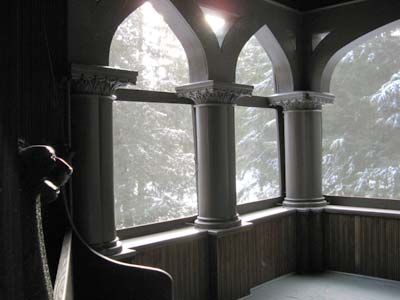
. . . . .
